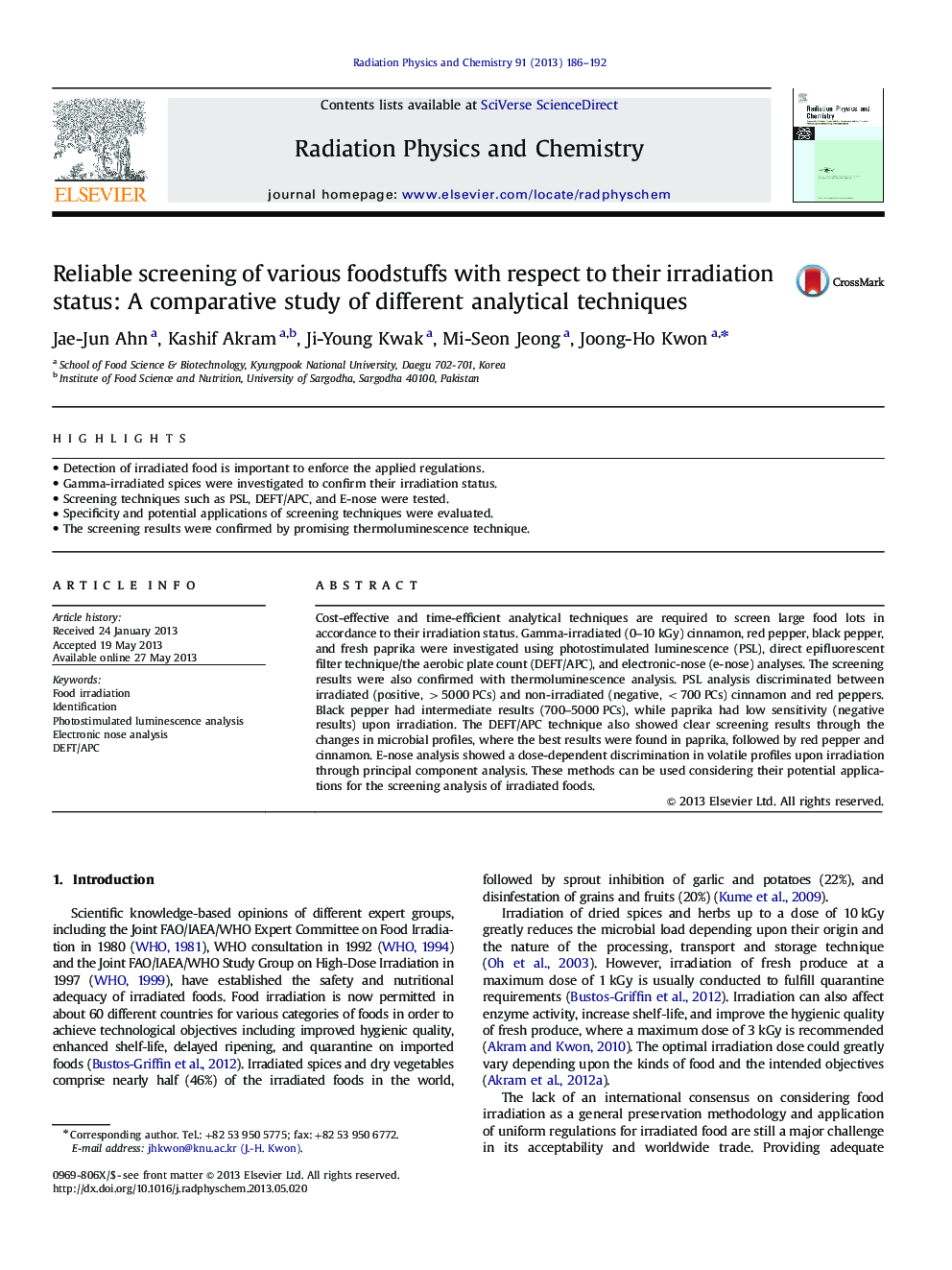| Article ID | Journal | Published Year | Pages | File Type |
|---|---|---|---|---|
| 1886227 | Radiation Physics and Chemistry | 2013 | 7 Pages |
•Detection of irradiated food is important to enforce the applied regulations.•Gamma-irradiated spices were investigated to confirm their irradiation status.•Screening techniques such as PSL, DEFT/APC, and E-nose were tested.•Specificity and potential applications of screening techniques were evaluated.•The screening results were confirmed by promising thermoluminescence technique.
Cost-effective and time-efficient analytical techniques are required to screen large food lots in accordance to their irradiation status. Gamma-irradiated (0–10 kGy) cinnamon, red pepper, black pepper, and fresh paprika were investigated using photostimulated luminescence (PSL), direct epifluorescent filter technique/the aerobic plate count (DEFT/APC), and electronic-nose (e-nose) analyses. The screening results were also confirmed with thermoluminescence analysis. PSL analysis discriminated between irradiated (positive, >5000 PCs) and non-irradiated (negative, <700 PCs) cinnamon and red peppers. Black pepper had intermediate results (700–5000 PCs), while paprika had low sensitivity (negative results) upon irradiation. The DEFT/APC technique also showed clear screening results through the changes in microbial profiles, where the best results were found in paprika, followed by red pepper and cinnamon. E-nose analysis showed a dose-dependent discrimination in volatile profiles upon irradiation through principal component analysis. These methods can be used considering their potential applications for the screening analysis of irradiated foods.
